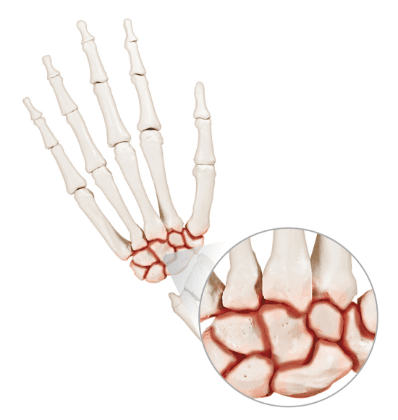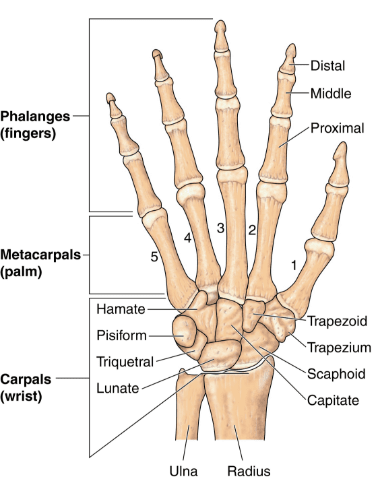To get a better idea of why your wrist hurts, take a look at how it works. Your wrist moves in many ways and helps provide the hand with very finely detailed movements: it flexes and extends, it turns out and turns in, and even moves in a circle. When they’re working well, you don’t think about the eight carpal bones of your upper hand, the two bones of your forearm, or all the soft tissue helping them work well together at the wrist. But, when something’s wrong, the pain can be debilitating.


The wrist and hand bones fit together like no other joint. A complex of bones and joints, the wrist bridges the two rows of small carpal bones of the hand to the two forearm bones.
Many
working
parts
Because the wrist involves so many parts, even a small injury can begin to create bigger problems. Your pain may be due to overuse, an injury, or chronic swelling or inflammation – most often referred to as arthritis.
Osteoarthritis (OA) a common form of arthritis associated with wrist pain, can be caused by wear-andtear over time or can develop years after an injury.
Post-traumatic arthritis develops when bone and cartilage don’t heal properly after an injury. When an injury doesn’t heal smoothly, resulting scar tissue can get in the way and cause pain.
Rheumatoid arthritis leaves the door open for unwelcome changes in the bone as the soft tissue that stabilizes and lubricates the joint becomes inflamed and painful.
Carpal tunnel syndrome is a painful condition often felt in the palm of the hand at the base of the thumb, index finger, middle finger, and thumb-side of the ring finger. When the median nerve that travels through the complex wrist joint becomes compressed by the tissue surrounding it (the carpal tunnel), you may experience pain, numbness, tingling, and even grip weakness.
Your doctor will examine your wrist and may ask you to take a few tests to determine the cause of your pain.